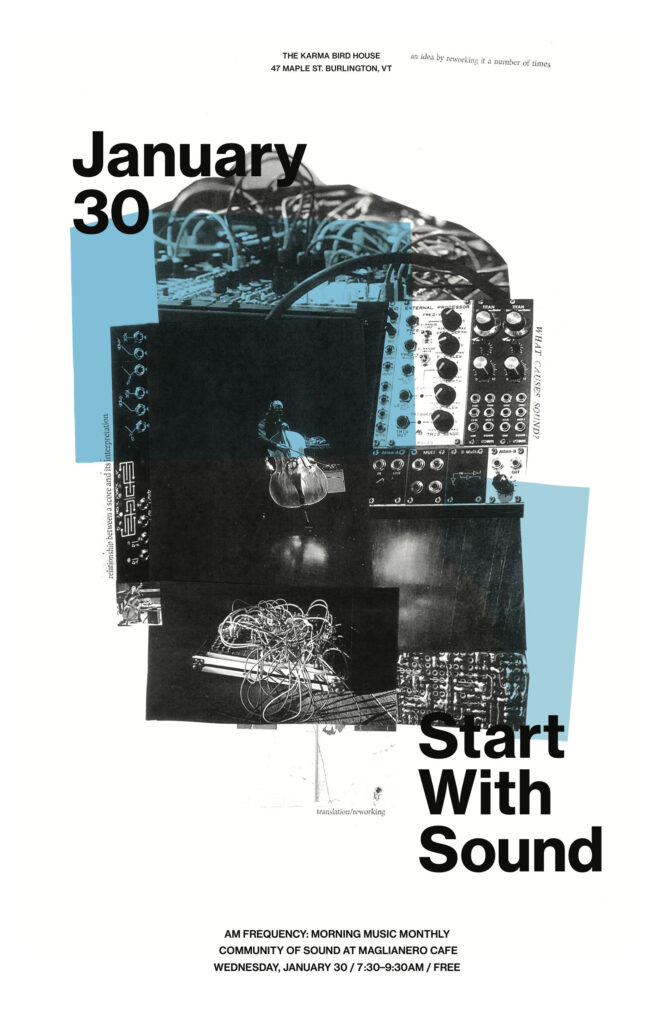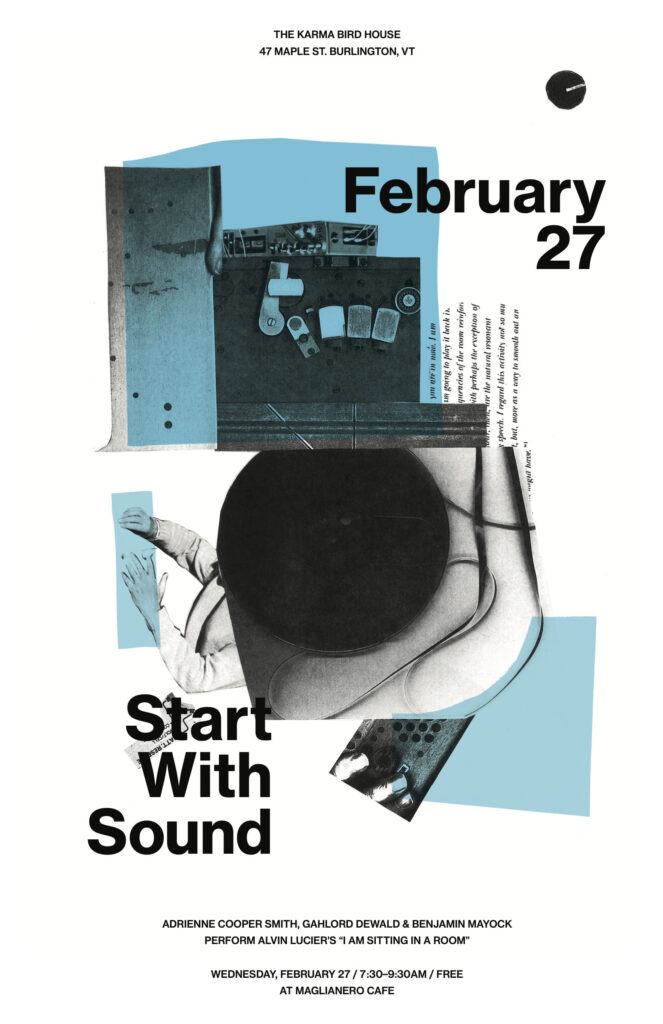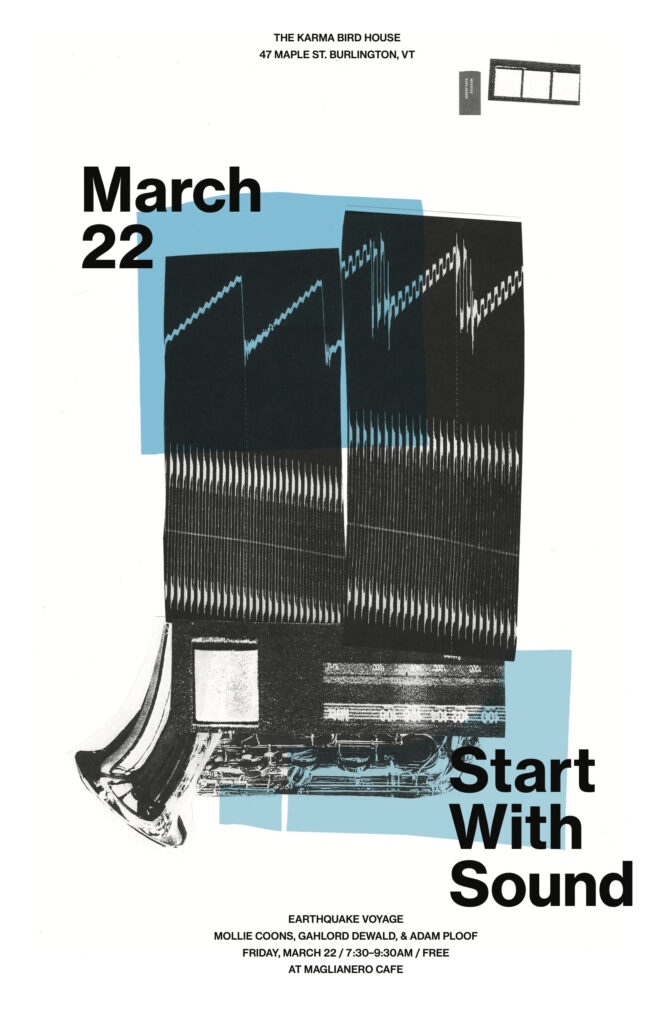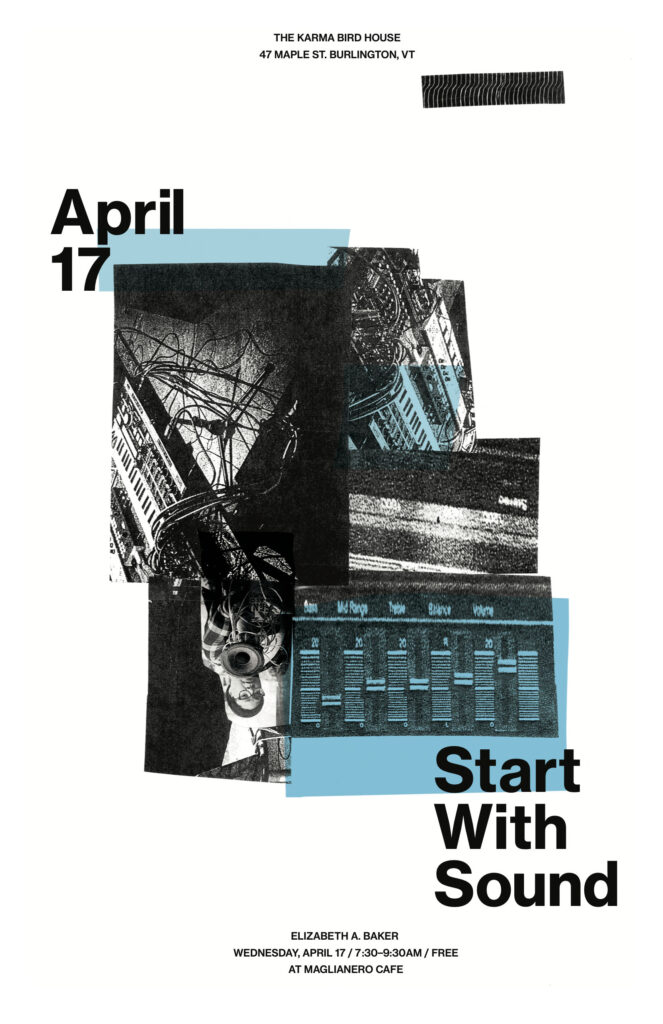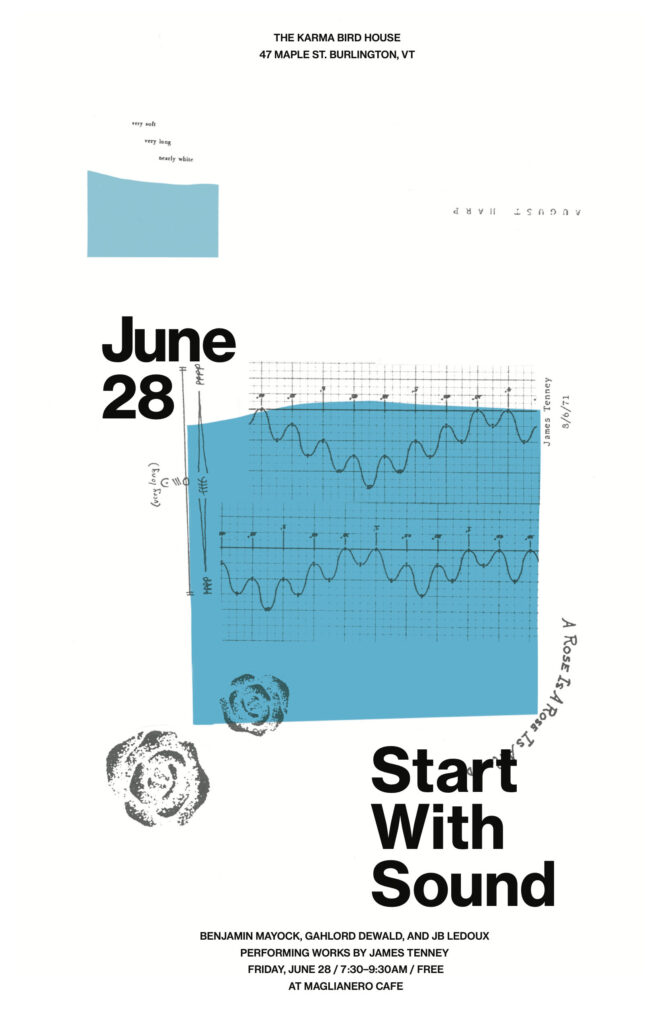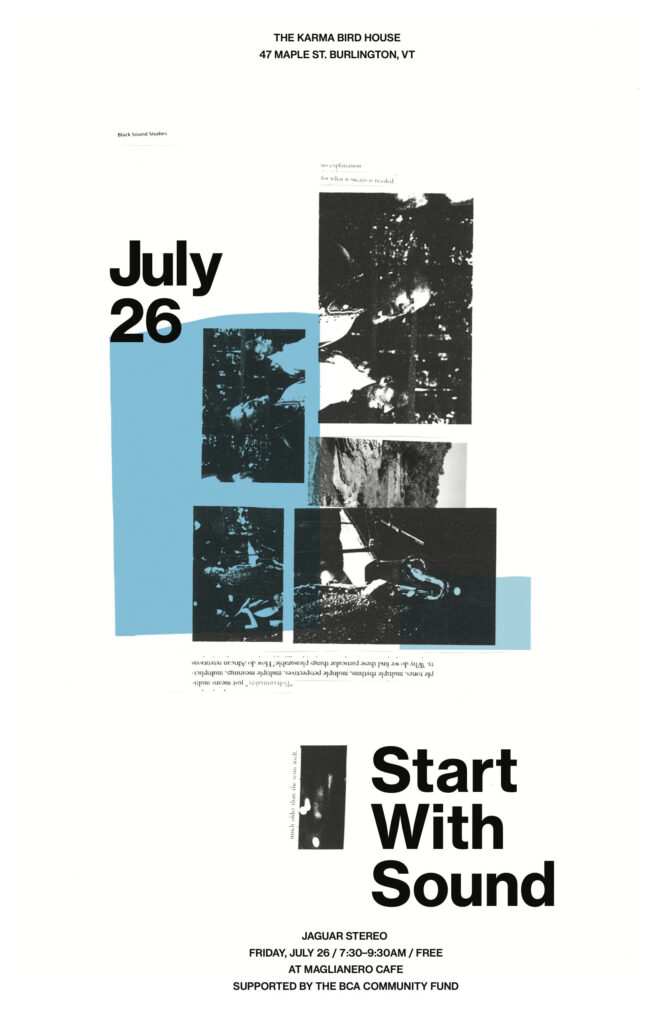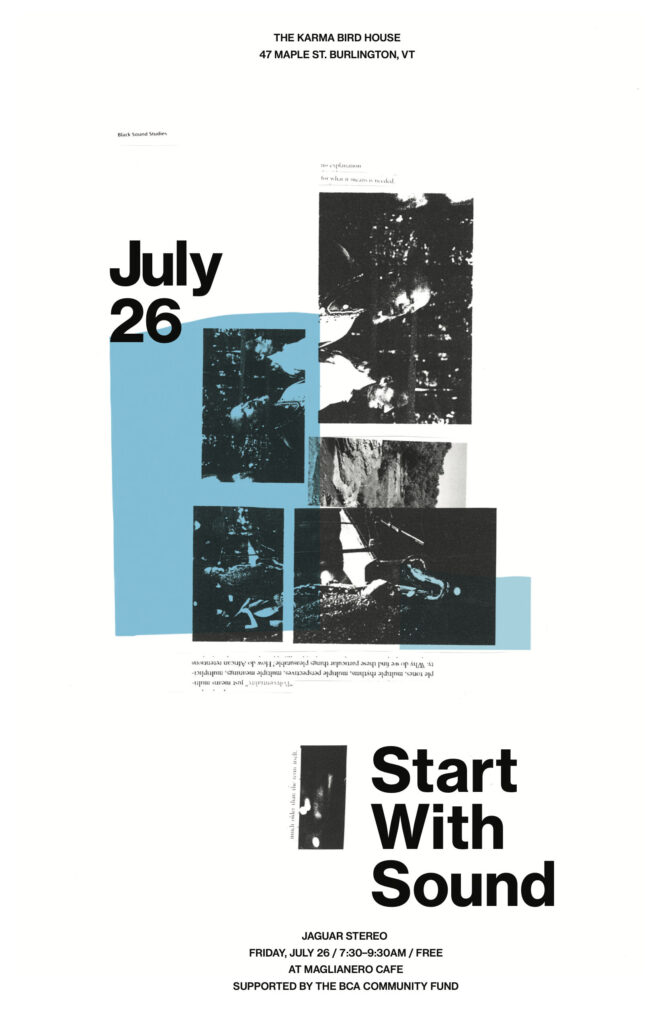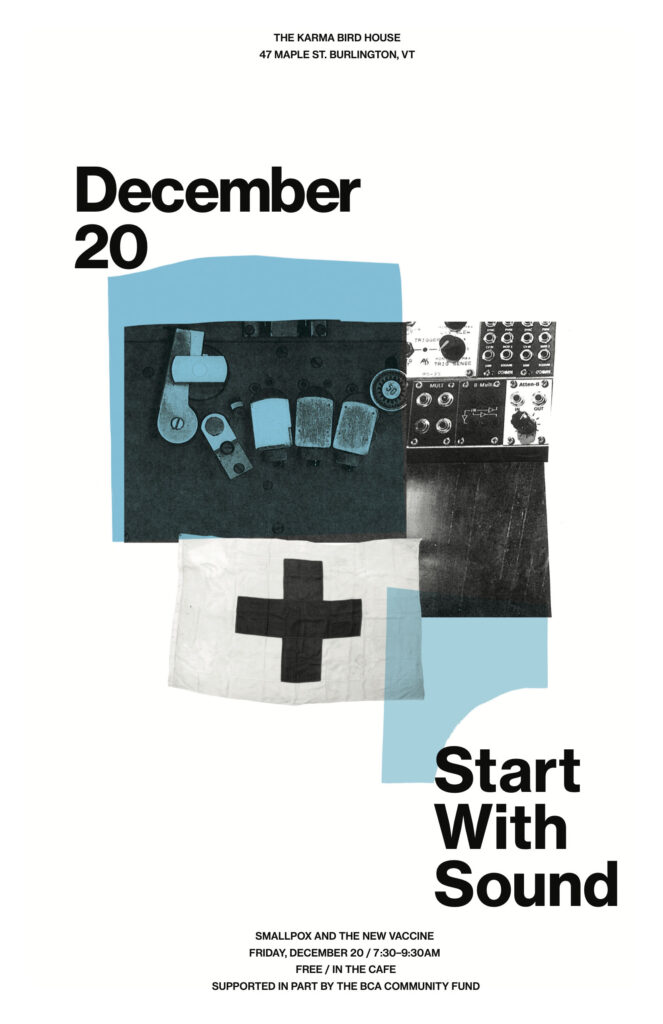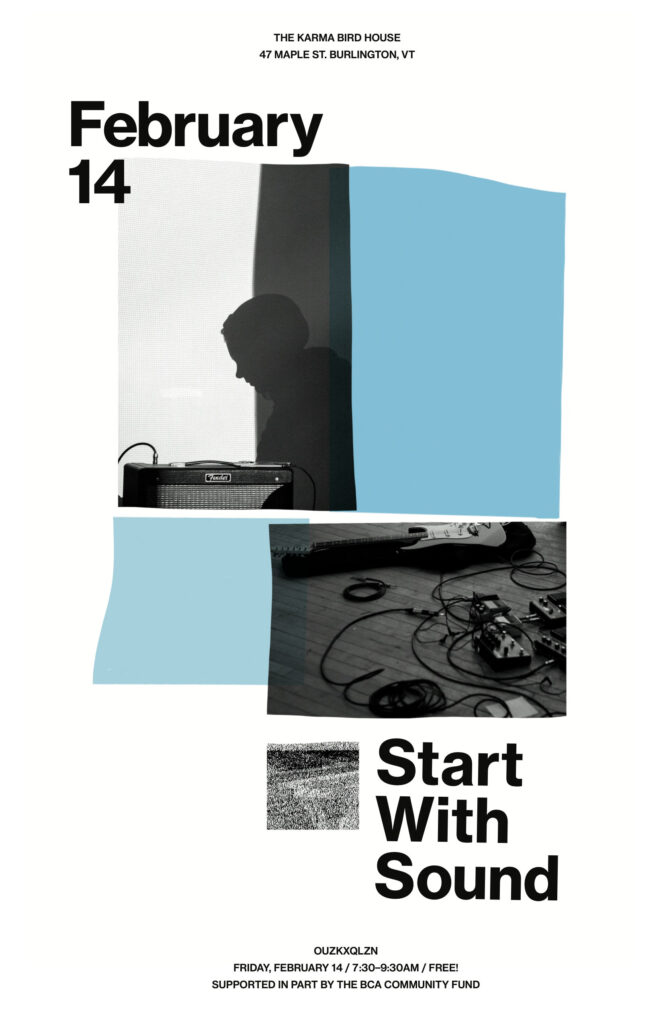A concert series of experimental, contemporary classical, and improvised music which occurs between 7:30am and 9:30am in a venue that is accessible and welcoming (the Karma Birdhouse Gallery). It ran for over a year beginning January 30, 2020 until Covid-19 put a stop to live performance.
While the early morning timing of this series may seem frivolous, it is concieved to serve a very specific accessibility need: performances in not-alcohol-driven locations and at times that are available to those with evening family, social, and work commitments. Also, some neurodiverse attendees may feel more comfortable.
This project was a collaboration between Karma Birdhouse, Alder Studio, and Gahlord Dewald of Community of Sound. Our July 2019-February 2020 shows were supported by the BCA Community Fund.
On New Year’s Eve 2018/2019 Alder Studio hosted an alcohol-free experimental music showcase at the Karma Birdhouse Gallery. Community of Sound member Gahlord Dewald was among the performers that evening. Many people throughout the evening enjoyed the experience so Gahlord and Jasmine Parsia of Alder Studio developed a plan to continue that experiment into the future.
Community Engaged Performance
AM Frequency arose out of a desire for community engaged performance for experimental music. There are two aspects of community need for AM Frequency. One is the audience need and the other is the artist musician need. I’ll start with audience.
There are no other music events happening on weekdays in the morning. Weekend morning music performances are religious.
There are people who are not being served as a result: people with dayjobs and evening family commitments, people with evening work commitments, people with infants.
There are no living music culture engagement opportunities for these people other than AM Frequency. We are alone, not even by genre of experimental music, but by entire discipline of music performance.
Another aspect of audience need is related to the fact that our venue and operation is unrelated to alcohol sales. For many people being around alcohol is problematic for them personally, professionally, and legally. For example, people on parole are frequently speci!cally barred from being in establishments that serve alcohol. While people who have been convicted of crimes should bear appropriate punishments, cutting off access to living music culture is not an appropriate punishment.
Compounding this particular issue is that, racially, those on parole are, to a higher degree than the overall population, people of color. Further thoughts on this topic, from musician/composer Elizabeth A Baker, can be read in this short Twitter thread.
Another audience that existing events underserve is those on the autism spectrum. This is an audience that may need space to move their limbs, the freedom to make a little noise now and then, the ability to walk around, or to leave and take a break. While there is no single checklist that will serve each individual, composer Chrysanthe Tan has assembled some guidelines and AM Frequency adheres to them in ways that other living music opportunities in Burlington Vermont do not.
For artist musicians, we need reimbursement for our cultural labor. Many of the venues in town provide compensation well below Burlington Livable Wage, and/or provide part of their compensation as alcoholic drinks (see paragraph above). But the costs of being a musician in Burlington are high. Most leases strictly forbid practicing music, which means musicians must maintain additional property to create their work. Most of Burlington is not amenable to “noise;” locating additional property in which to practice absorbs signi!cant time. A performance where we are compensated financially for our art allows us to continue our work in Burlington.
Sounds of AM Frequency
Performers on the series included: Adrianne Cooper Smith, Lauren Costello, Gahlord Dewald, Toussaint St. Negritude, Mollie Coons, Adam Ploof, JB LeDoux, Benjamin Mayock, and Gabrielle Hall.
In addition to specially prepared works and free improvisation, the series included works by James Tenney, Anne Leilehua Lanzilotti, Jen Wang, and a complete performance of Alvin Lucier’s “I am sitting in a room.”
Sounds heard on the series included banjo-folk-metal, Wandelweiser, extended gigantic gong, electro-sax-drone, tape loop, contact-mic-on-a-bowl-and-a-stone, poetry, bass clarinet, spacialy-distributed theater, Appalachian folk, microtunings, singing, and field recordings.

